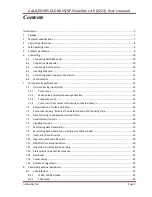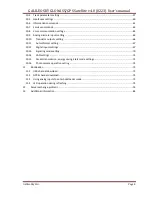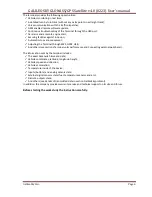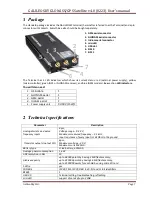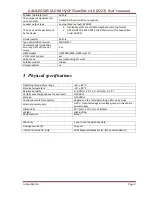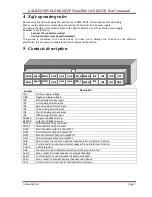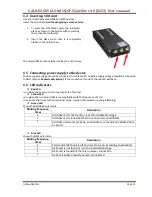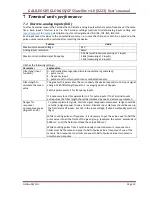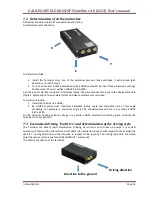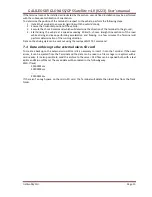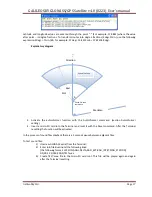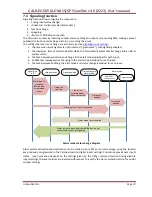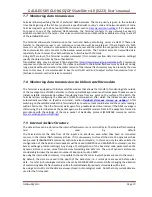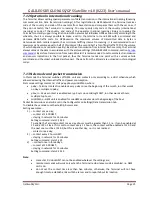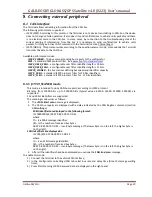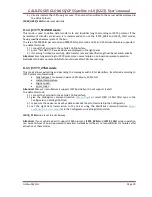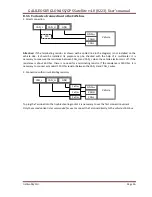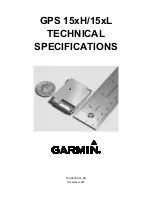
GALILEOSKY GLONASS/GPS Satellite v4.0 (0223) User’s manual
GalileoSky Ltd.
Page 12
7
Terminal units performance
7.1
Discrete-analog inputs (DAI)
To attach external sensors the Terminal has 6 discrete-analog inputs which are pulse-frequency at the same
time. Each input’s function is set in the Terminal settings (sections Discrete-analog inputs setting and
Inputs/outputs
). In
Contacts
description
inputs are designated as IN0, IN1, IN2, IN3, IN4, IN5.
Each input saves its values to the nonvolatile memory, i.e. in case the channel is set to be a pulse one, the
pulse number value will be restored after resetting the device.
Feature
Value
Maximum measured voltage
33 V
Analog inputs resolution
33mV
Maximum transmitted signal frequency
3,5 kHz (synchronous measuring at 1 input)
2 kHz (measuring at 2 inputs)
1 kHz (measuring at 6 inputs)
DAI has the following settings:
Parameter
Explanation
Filter type (input
function)
0 - arithmetical average (also discrete input state is generated);
1 - pulse count;
2 - frequency input;
3 - pulse count from two synchronous connected sensors.
Filter length to
calculate the mean
value
The greater this parameter, the more slowly the device responds to the input signal
change. With filter length equal to 1 - averaging does not happen.
Set this parameter to 1 for frequency inputs.
It is necessary to set this parameter to 1 for pulse inputs. If the Terminal counts
extra pulses, the filter length should be increased by one and accuracy estimated.
Ranges for
response/
nonresponse areas
(logical 1 and 0)
To process discrete signals, discrete signal response/nonresponse range should be
set where signals equal to one and zero. Discrete input statuses should be seen in
the field Status Of Inputs, but not in the Input voltage. (Table 2. GalileoSky protocol
tags).
While counting pulses or frequency, it is necessary to put the value equal to half the
pulse value into all the fields of the given group. (example: the pulses' amplitude is
5000 mV, so all the fields must take the value 2500 mV)
While counting pulses from 2 synchronously connected sensors, response zone
limits must be the same and equal to half of pulse value at response of one of the
sensors. Non-response zone limits are equal to half of pulse value at two sensors
simultaneous response.


